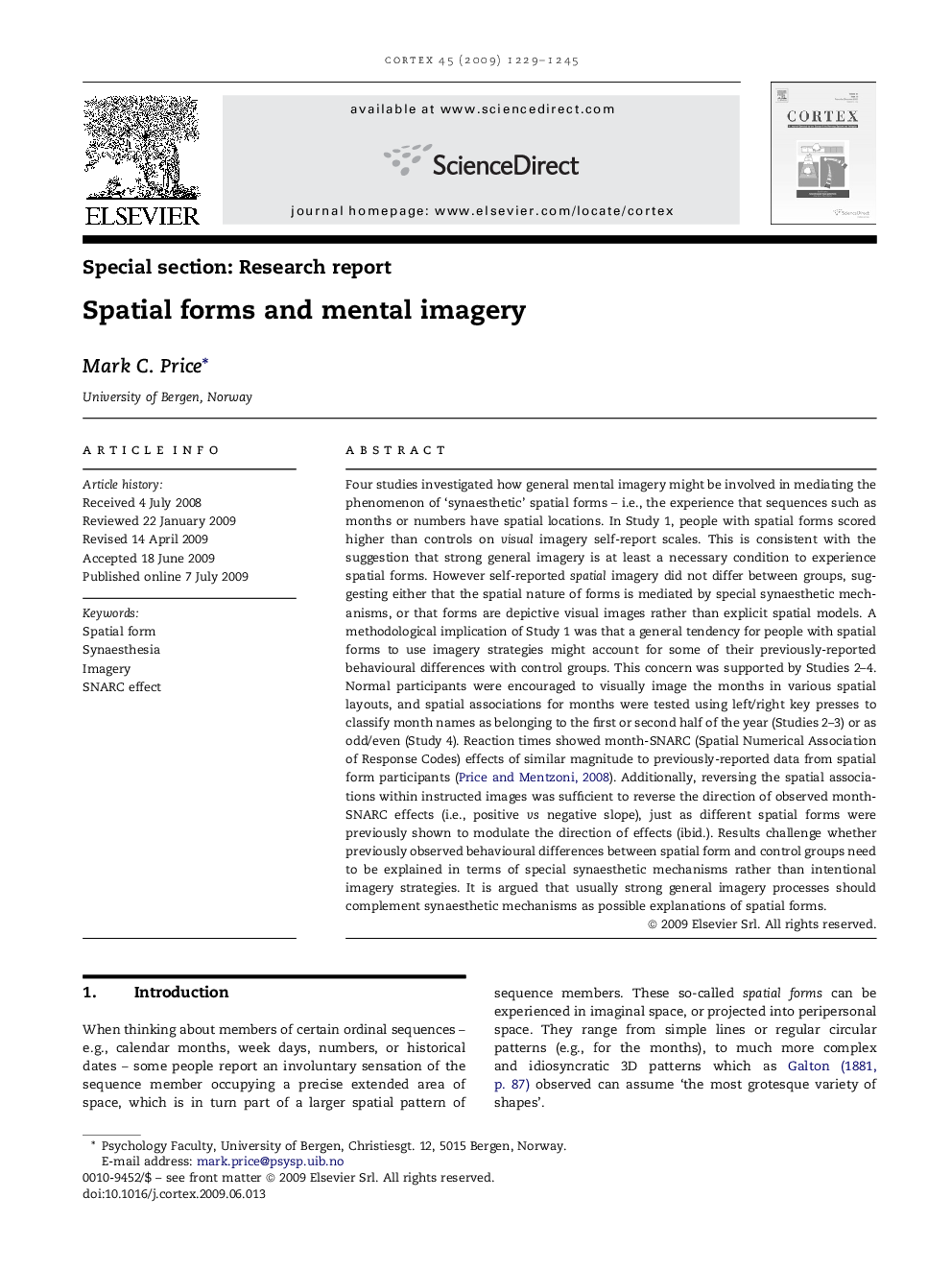| کد مقاله | کد نشریه | سال انتشار | مقاله انگلیسی | نسخه تمام متن |
|---|---|---|---|---|
| 942772 | 925157 | 2009 | 17 صفحه PDF | دانلود رایگان |

Four studies investigated how general mental imagery might be involved in mediating the phenomenon of ‘synaesthetic’ spatial forms – i.e., the experience that sequences such as months or numbers have spatial locations. In Study 1, people with spatial forms scored higher than controls on visual imagery self-report scales. This is consistent with the suggestion that strong general imagery is at least a necessary condition to experience spatial forms. However self-reported spatial imagery did not differ between groups, suggesting either that the spatial nature of forms is mediated by special synaesthetic mechanisms, or that forms are depictive visual images rather than explicit spatial models. A methodological implication of Study 1 was that a general tendency for people with spatial forms to use imagery strategies might account for some of their previously-reported behavioural differences with control groups. This concern was supported by Studies 2–4. Normal participants were encouraged to visually image the months in various spatial layouts, and spatial associations for months were tested using left/right key presses to classify month names as belonging to the first or second half of the year (Studies 2–3) or as odd/even (Study 4). Reaction times showed month-SNARC (Spatial Numerical Association of Response Codes) effects of similar magnitude to previously-reported data from spatial form participants (Price and Mentzoni, 2008). Additionally, reversing the spatial associations within instructed images was sufficient to reverse the direction of observed month-SNARC effects (i.e., positive vs negative slope), just as different spatial forms were previously shown to modulate the direction of effects (ibid.). Results challenge whether previously observed behavioural differences between spatial form and control groups need to be explained in terms of special synaesthetic mechanisms rather than intentional imagery strategies. It is argued that usually strong general imagery processes should complement synaesthetic mechanisms as possible explanations of spatial forms.
Journal: Cortex - Volume 45, Issue 10, November–December 2009, Pages 1229–1245